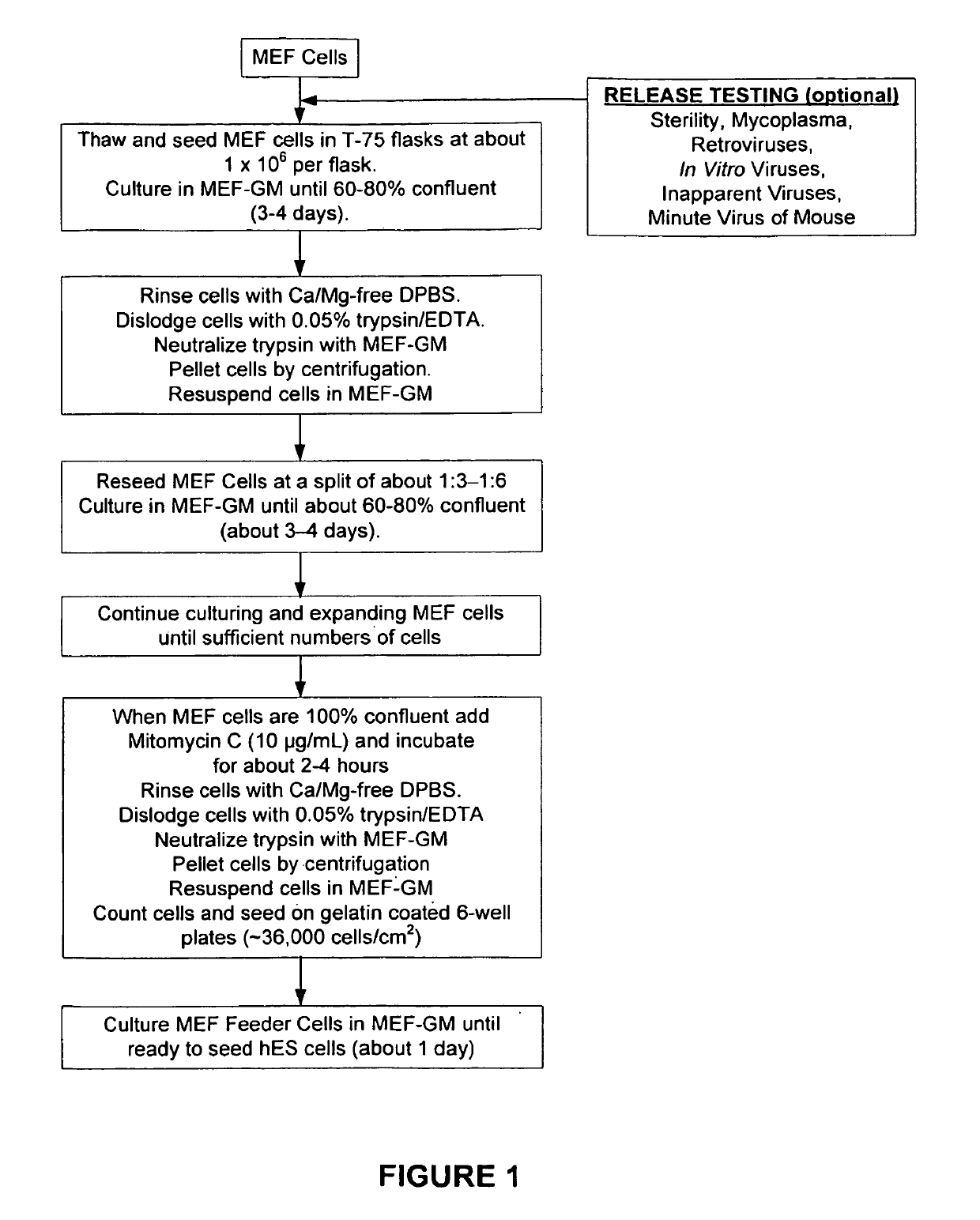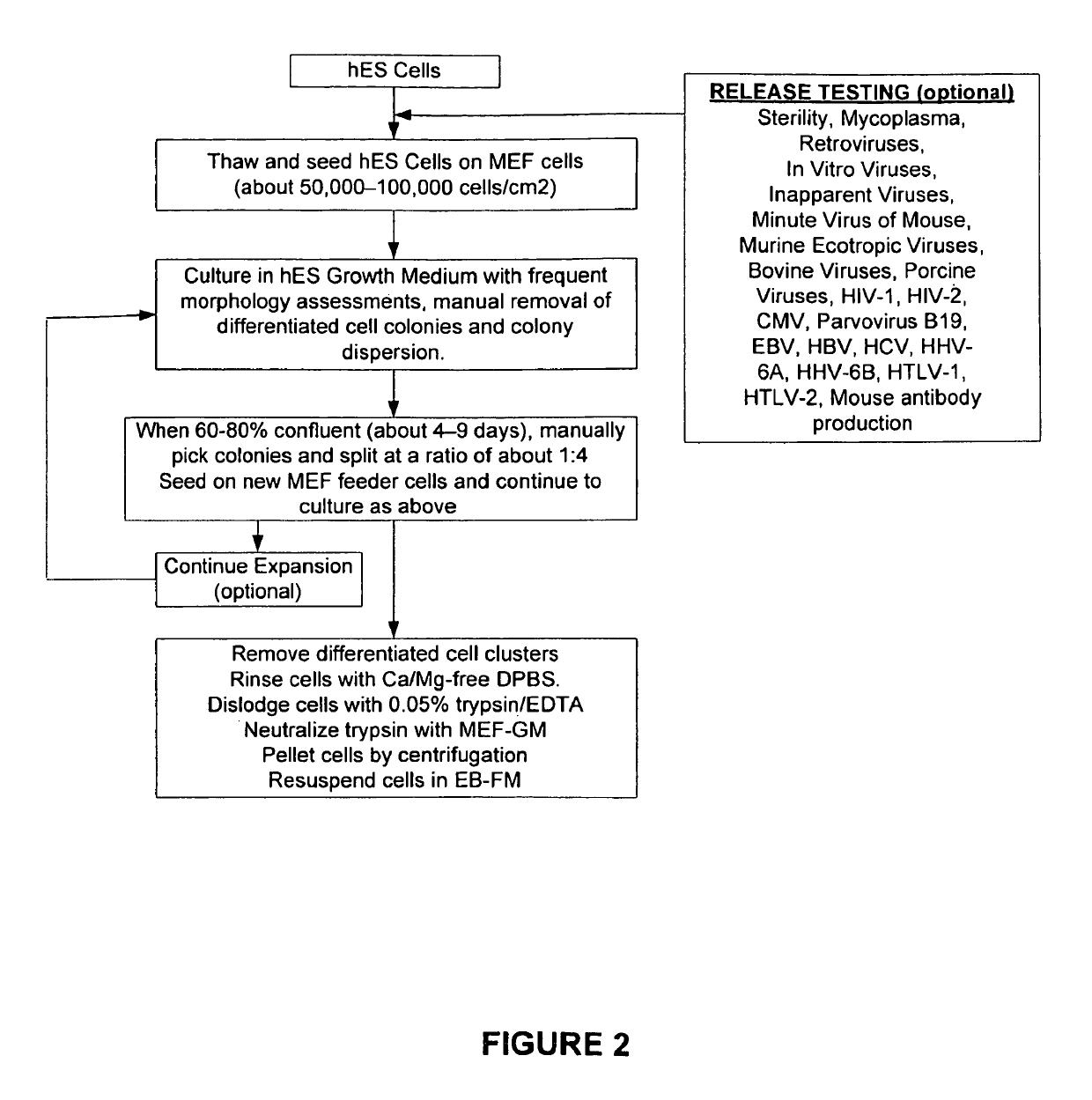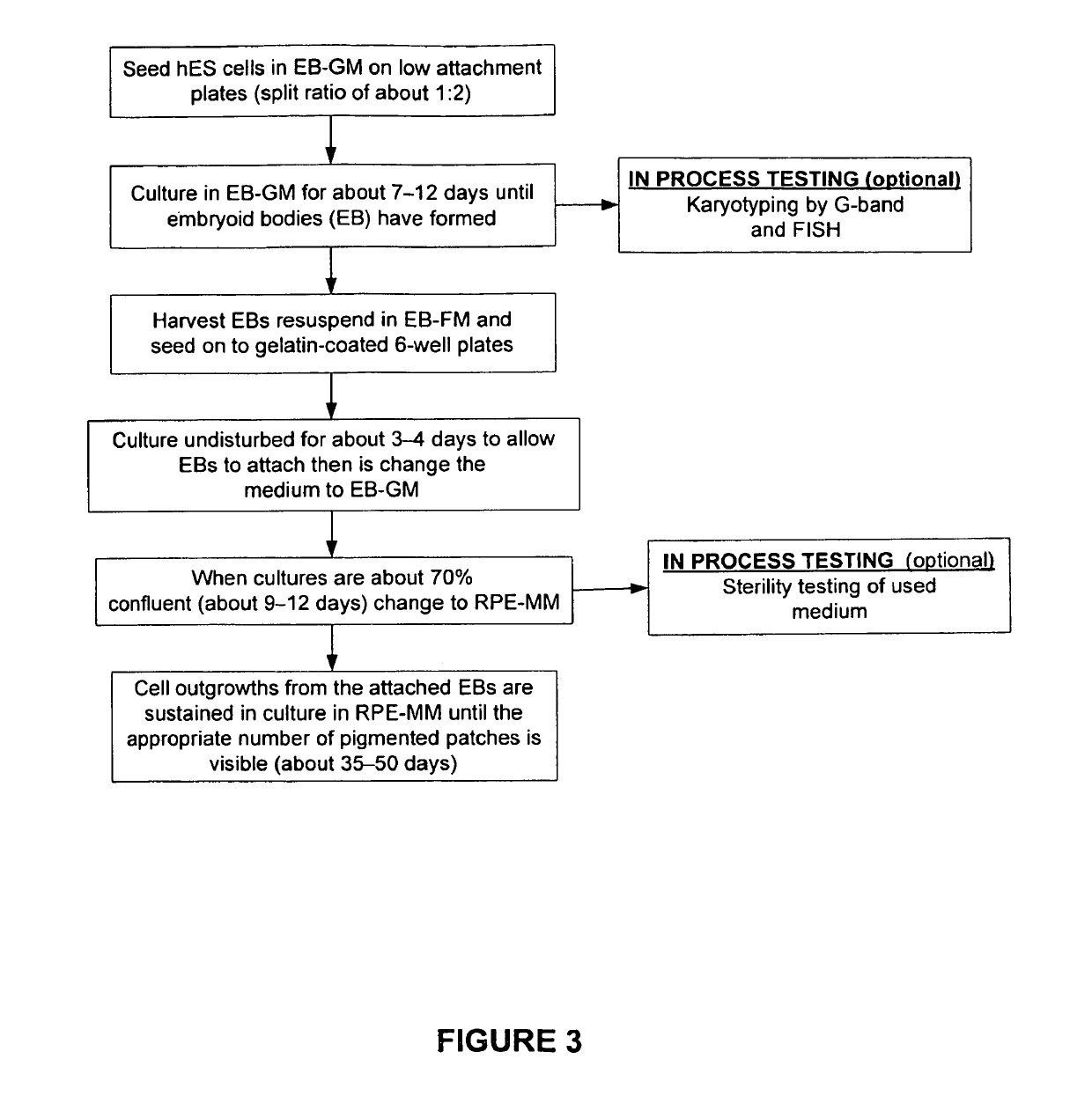Methods of producing human RPE cells and pharmaceutical preparations of human RPE cells
a technology of rpe cells and rpe cells, which is applied in the direction of drug compositions, skeletal/connective tissue cells, biocide, etc., can solve the problems of necrosis in the rpe, disruption of intracellular, lack of functional rab proteins, etc., and achieve the effect of improving visual acuity and improving visual acuity
- Summary
- Abstract
- Description
- Claims
- Application Information
AI Technical Summary
Benefits of technology
Problems solved by technology
Method used
Image
Examples
example 1
Method of Making Human RPE Cells Using HES Cells
[0235]Mouse embryo fibroblasts (MEF) were grown in MEF-GM medium supplemented with about 10% fetal bovine serum (FBS). When sufficient numbers of MEFs were obtained, feeder cells were prepared by mitotically blocking the MEFs with mitomycin-C and seeding into 6-well plates coated with gelatin. See FIG. 1. Vials of hES were thawed, seeded on to the MEF feeder cells, and co-cultured in hES Growth Medium. See Table 2 and FIG. 2. The hES cells were expanded several times at a split ratio of about 1:3. When a sufficient number of hES cells were propagated, the cells were harvested and placed into suspension culture in low attachment 6-well plates in EB Formation Medium (this allows for the formation of embryoid bodies (EBs)). See Table 2 and FIG. 3.
[0236]The EBs were then be transferred to gelatin-coated 6-well plates to allow for the outgrowth of RPEs. The initial growth medium is EB Outgrowth Medium, but once the EBs were attached this wa...
example 2
Seeding and Expansion of hES Cells
[0237]Cryopreserved human embryonic stem cells (hES) cells were thawed, washed with hES-GM, and inoculated onto the mitotically inactivated mouse embryonic feeder (MEF) cells in the gelatin-coated 6-well plates. See FIG. 7. The contents of each vial (˜1 million cryopreserved cells) of hES were seeded into one well of a 6-well plate, and co-cultures of hES and MEF are incubated for about 4-9 days until about 60-80% confluent. During this time the cultures were examined microscopically: larger colonies displaying mostly hES morphology were dispersed into smaller pieces to prevent spontaneous differentiation. Mosaic colonies with large areas of undifferentiated cells were trimmed by removing those portions comprised of differentiated cells. Colonies containing predominately differentiated cells or non hES cell morphology were picked and discarded, using a stem cell cutting tool using photographs as a guide to the morphology of the colonies. See FIG. 2....
example 3
Human Embryoid Body Formation and Outgrowth
[0241]hES cells were inoculated onto low-attachment, 6-well plates (at a split ratio of 1:2) and cultured for about 7-12 days until embryoid bodies were formed and matured. Embryoid bodies in suspension were harvested from the low attachment wells, resuspended in EB-FM, and plated onto gelatin-coated 6-well culture plates. The plates were cultured undisturbed for about 3-4 days to allow the embryoid bodies to attach. At this time, medium was changed to EB Growth Medium (EB-GM). When cultures were about 70% confluent (e.g., after about 9-12 days), the medium was changed to RPE Maintenance Medium (RPE-MM). See FIG. 3. Cell outgrowths from the attached EBs were sustained in culture in RPE-MM until the appropriate number of pigmented clusters were visible (e.g., after about 35-50 days after changing to RPE-MM). Thus, embryoid bodies were formed and isolated substantially free of non-human cells and thus not “xenotransplantation” material. These...
PUM
| Property | Measurement | Unit |
|---|---|---|
| time | aaaaa | aaaaa |
| temperature | aaaaa | aaaaa |
| period of time | aaaaa | aaaaa |
Abstract
Description
Claims
Application Information
 Login to View More
Login to View More - R&D
- Intellectual Property
- Life Sciences
- Materials
- Tech Scout
- Unparalleled Data Quality
- Higher Quality Content
- 60% Fewer Hallucinations
Browse by: Latest US Patents, China's latest patents, Technical Efficacy Thesaurus, Application Domain, Technology Topic, Popular Technical Reports.
© 2025 PatSnap. All rights reserved.Legal|Privacy policy|Modern Slavery Act Transparency Statement|Sitemap|About US| Contact US: help@patsnap.com



